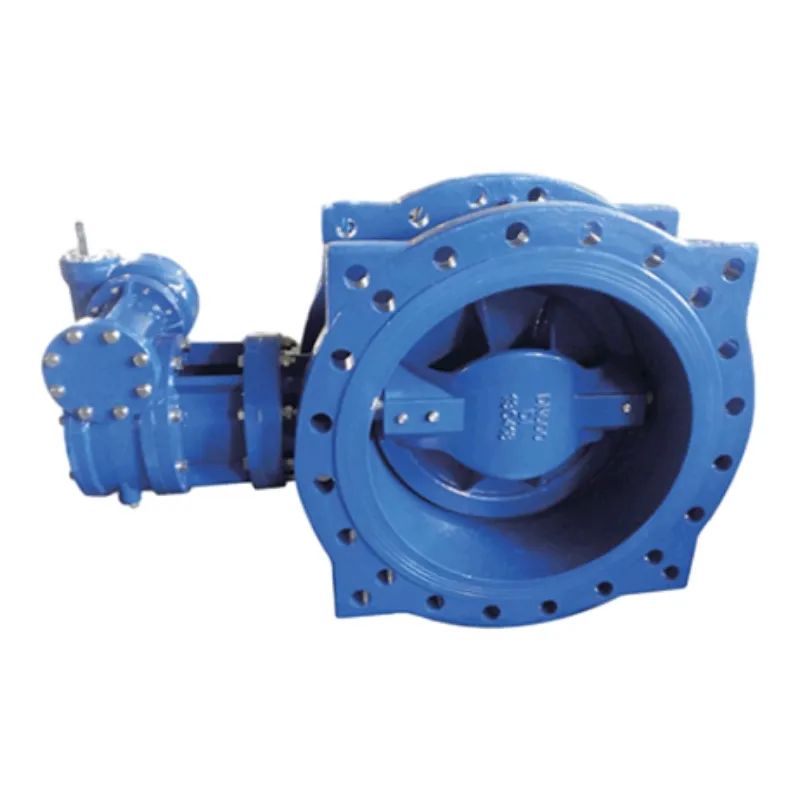Jan . 01, 2025 04:19 Back to list
Innovative Dual Flap Check Valve Design for Enhanced Flow Control and Reliability
Understanding Dual Flap Check Valves
In the realm of fluid dynamics, check valves play a crucial role in ensuring the efficient and safe flow of fluids within a system. Among various types of check valves, the dual flap check valve stands out due to its design and operational advantages. This article delves into the mechanics, benefits, applications, and maintenance practices associated with dual flap check valves.
What is a Dual Flap Check Valve?
A dual flap check valve, also known as a dual plate check valve, is designed to prevent backflow in piping systems. Unlike traditional single-disc check valves, dual flap check valves utilize two flaps (or plates) that open and close simultaneously in response to fluid flow direction. This design enables the valve to be lightweight and compact, making it ideal for applications where space is a premium.
How Does it Work?
The operation of a dual flap check valve is relatively straightforward. Under normal conditions, when fluid flows in the forward direction, the flaps are pushed open, allowing the fluid to pass through. When there is a decrease in flow velocity or a reverse flow condition occurs, the flaps close due to gravity and the weight of the fluid. This closure prevents backflow, safeguarding the system from potential damage and the risk of contamination.
The quick closing mechanism of dual flap check valves reduces water hammer (a pressure surge resulting from sudden changes in flow) significantly, thanks to the lightweight, aerodynamic design of the flaps. This feature is particularly beneficial in high-velocity applications.
Benefits of Dual Flap Check Valves
1. Reduced Pressure Loss The dual design facilitates a lower pressure drop across the valve compared to traditional single flap designs. This efficiency contributes to energy savings and improved system performance.
2. Compact Size The lightweight and compact nature of dual flap check valves allows for easy installation in confined spaces, making them desirable in various industries, including water treatment plants, pump stations, and industrial processes.
3. Minimal Maintenance Due to their simple mechanism and robust construction, dual flap check valves require minimal maintenance. This characteristic not only reduces operational costs but also extends the lifespan of the valve.
4. Versatility The applications for dual flap check valves span various industries, including oil and gas, pharmaceuticals, and HVAC systems. They are suitable for both horizontal and vertical installations, making them an adaptable choice for engineers.
dual flap check valve

5. Resistance to Wear The dual flap design minimizes mechanical wear, especially in abrasive fluid conditions. Selecting durable materials for construction enhances longevity and reduces the frequency of replacements.
Applications of Dual Flap Check Valves
Dual flap check valves find utility in several contexts
- Water and Wastewater Treatment They are commonly used in sewage and wastewater systems to prevent backflow, ensuring that treated water does not contaminate clean water lines.
- Industrial Processes In manufacturing settings, these valves prevent backflow in fluid transport systems, protecting equipment and maintaining operational efficiency.
- Fire Protection Systems Dual flap check valves are essential components in fire suppression systems, ensuring water flows in only the intended direction, thereby protecting critical infrastructure.
- HVAC Systems In heating, ventilation, and air conditioning applications, these valves help regulate flow and maintain system integrity.
Maintenance Considerations
While dual flap check valves are known for their durability, regular maintenance checks can ensure their optimal performance. Operators should inspect the valve for any signs of wear or damage, particularly around the flaps and seats. Cleaning any debris that may impede the flaps’ operation is also crucial. Regular system checks to monitor flow direction and velocity can preemptively identify potential issues.
Conclusion
In summary, dual flap check valves are a robust solution for controlling fluid flow in various piping systems. Their unique design offers numerous advantages, including reduced pressure loss, compact size, and versatility across applications. By properly maintaining these valves, industries can ensure the longevity and efficiency of their fluid handling systems, contributing to safer and more effective operations. Whether in water treatment, industrial processes, or HVAC systems, the dual flap check valve proves to be an indispensable component in modern fluid management.
Share
-
Gate Valve Non Rising is IdealNewsApr.27,2025
-
Different sizes of butterfly valveNewsApr.27,2025
-
Choosing the Right Wire Cable Manufacturers MattersNewsApr.27,2025
-
Choosing the Best Butterfly ValveNewsApr.27,2025
-
Best Y Type Strainer Supplier and Y StrainersNewsApr.27,2025
-
A Guide for Industrial ApplicationsNewsApr.27,2025